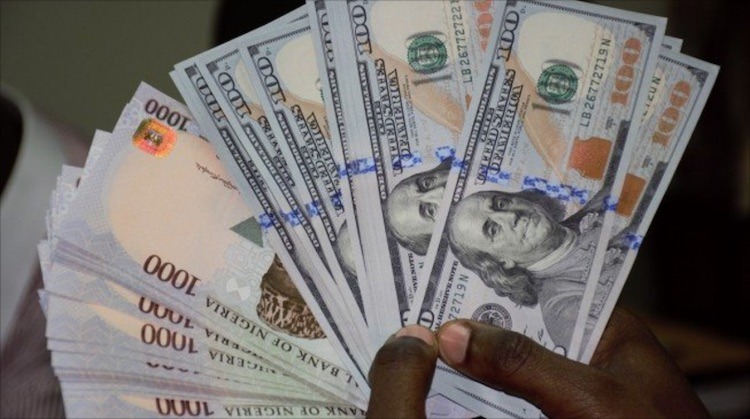Naira
Bank of America: Nigerian Naira Undervalued by 12% After Foreign Exchange Reform
In a recent analysis, experts at Bank of America have stated that the Nigerian naira has transitioned from being overvalued to undervalued following the government’s much-anticipated foreign exchange reform, Investors King reports.

In a recent analysis, experts at Bank of America have stated that the Nigerian naira has transitioned from being overvalued to undervalued following the government’s much-anticipated foreign exchange reform, Investors King reports.
The report, shared with clients on June 28 and reported by Businessday, highlights the significant changes in the currency’s value.
As of Tuesday, the dollar to naira exchange rate stood at 776 NGN to 1 USD at the black market.
According to Bank of America analysts, the fair value estimate for the USDNGN (United States Dollar to Nigerian Naira) exchange rate now stands at 680 per USD, indicating that the naira is undervalued by approximately 12%. This revised fair value estimate represents an increase from the previous estimate of 580 per USD.
Despite the shift towards undervaluation, analysts predict that the USDNGN exchange rate is likely to trade above the fair value estimate. They anticipate that by the end of the year, the exchange rate may reach 700, with a subsequent return to the range of 650-680 in early 2024.
This significant fluctuation in the naira’s value comes after Nigeria adopted a floating exchange rate policy on June 14, abandoning the previous currency peg that had deterred foreign investors and hindered the economy’s growth. Since the reform, the naira has experienced a depreciation of over 60% when compared to its pre-reform level of N460 per USD.
Bank of America’s analysts, however, caution that the transition period, the alignment of rates, and the process of unlocking more US dollars into the formal market will require time. They believe that once these factors settle, the value of the naira should strengthen and appreciate, signaling a positive outlook for the Nigerian currency.
Bank of America’s analysis also highlights the potential for sustained improvement in Nigeria’s current account balance. The report suggests that higher oil exports, which could generate an additional $12 billion in revenue, coupled with a liberalized import regime that may contribute $10 billion through non-oil imports, could result in consistent current account surpluses in the medium term. These surpluses are expected to bolster the inflow of dollars, further supporting the naira’s stability.
The experts at Bank of America emphasize the potential net gain of $2-3 billion from these measures, strengthening Nigeria’s current account surplus. This optimistic outlook underscores the importance of increased oil production and a more flexible import regime in ensuring a healthier balance in Nigeria’s foreign exchange market.
Bank of America’s analysis aligns with the views expressed by Standard Chartered Bank, another prominent financial institution. They also consider the naira to be undervalued following the float and anticipate a strengthening of the currency. Standard Chartered Bank predicts that the Nigerian naira may reach a level of N685 per US dollar by the end of Q2-2023, rising to 720 in Q3-2023, and further appreciating thereafter as the market stabilizes.
Nigeria’s decision to move towards a unified exchange rate system, after years of employing multiple exchange rates, has drawn both praise and criticism from economists. This latest reform, alongside the elimination of a costly petrol subsidy program, represents a bold step by President Bola Tinubu’s administration to address longstanding issues and foster economic growth.
As Nigeria continues to implement reforms aimed at fixing its foreign exchange market, the assessment by Bank of America and Standard Chartered Bank suggests that the undervalued naira may gradually regain strength, providing a positive outlook for the country’s economy and its currency’s value on the international stage.